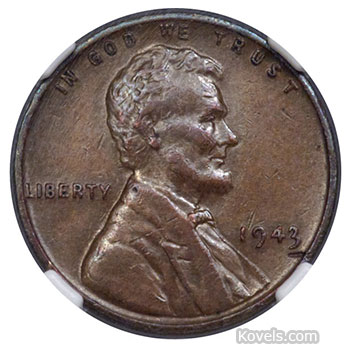A penny saved, this time, is a lot more than a penny earned. When you find an unusual or what seems to be a unique item, it pays to do some research. In 1947, Don Lutes Jr. was 16 when he received a 1943 copper Lincoln penny in his change at the school lunch room. He realized it was not like other 1943 pennies because the U.S. Mint had changed from copper alloy (95% copper and 5% zinc) to zinc-coated steel to save the copper for the war effort. Lutes started seeking information at the top, with the U.S. Treasury Department, and was told no copper pennies were made in 1943. But he was a young coin collector and kept the unusual penny for his collection. A few other 1943 copper pennies were later rumored about, found, and sold while “experts” tried to decide if they were fake. In 1958, one of the pennies sold for $40,000 (the equivalent of $350,000 today).
The Lutes penny is one of 10 to 15 known to exist that were accidentally pressed in 1943. The copper alloy blanks were caught in the trap doors of bins that fed blanks into the Mint’s coin presses at the end of 1942. In 1943 they were fed into coin presses along with wartime steel blanks, and “error coins” slipped into circulation. The Lutes penny was estimated at $170,000 to $200,000. It sold for $204,000 at a January 2019 Heritage auction in Orlando, Florida. After waiting 72 years, Mr. Lutes never learned the value of his copper penny. He died in September, a few months before the sale. He left the money to the Pittsfield, Mass., Public Library.
Note: The wire service that issued a press release about the penny mistakenly said the estimated price was $1.7 million. They issued a correction listing Heritage Auction’s estimate as $170,000. Unfortunately, the error was quoted by many news outlets and the later correction may have been missed.
Photo: Heritage Auctions, HA.com
(Penny shown in a holder)




Are there any answers to these questions ?
I’m just trying to get clarification.. does the penny have to be non-magnetic to be worth of value? Thank you for your help..
If there are only 10 to 15 that were “accidentally minted, how many claim to have one?
Many copies of these were made by copper plating original 1943 zinc coated steel pennies. If your 1943 copper penny is magnetic, you have one of those. Mark Lawson Antiques, Jewelry, & Coin.
I have had a penny to similar and I was just curious how to determine exactly if it is one of these